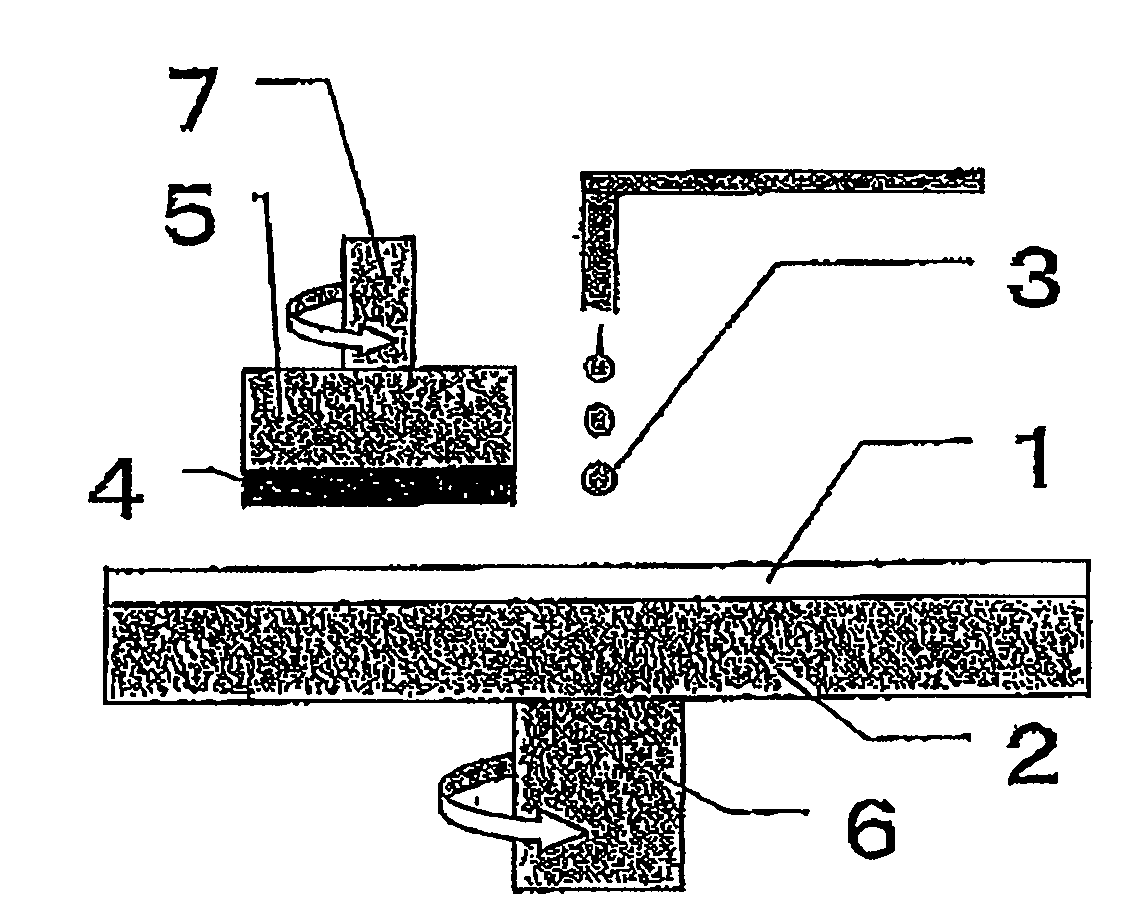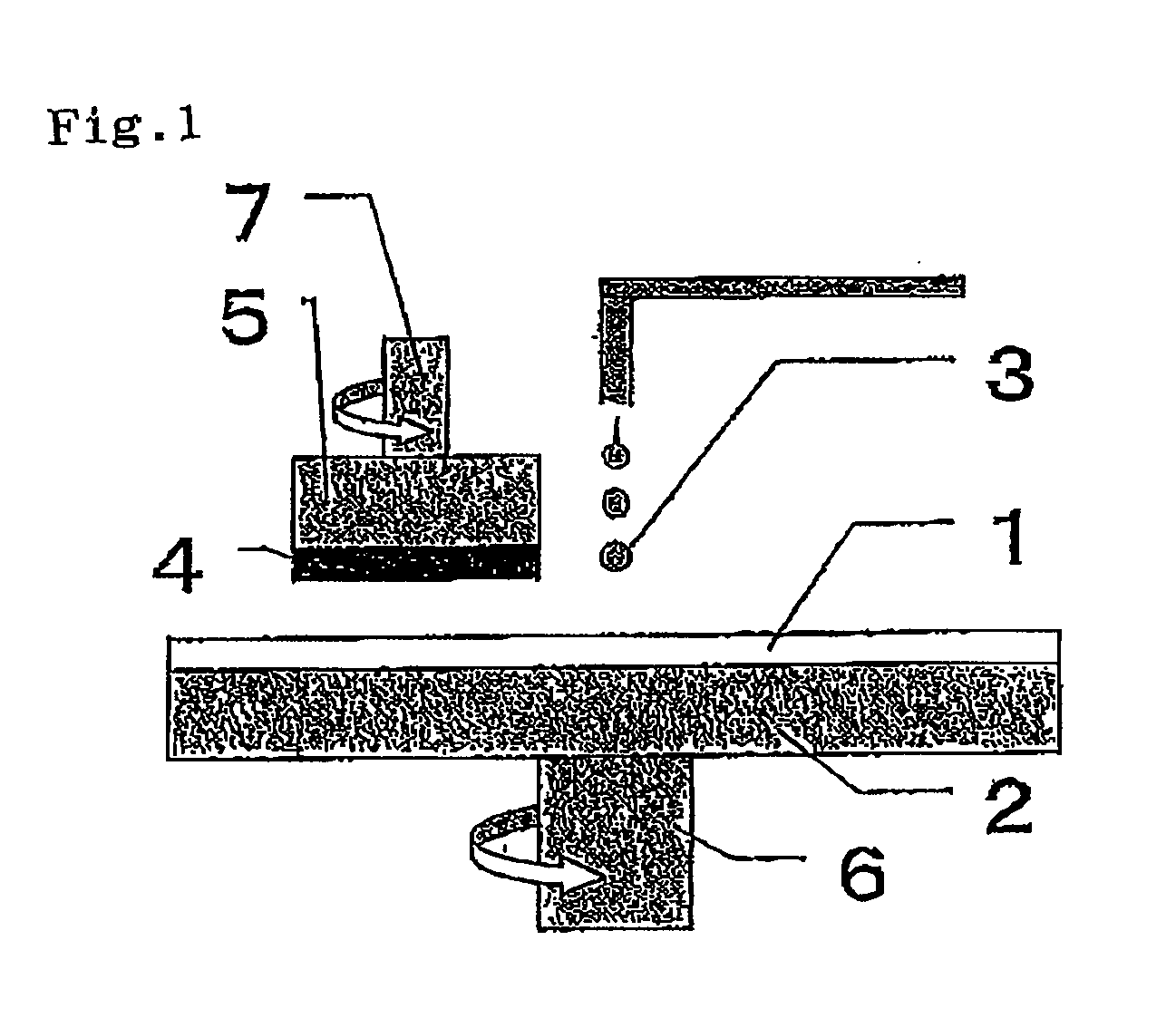Method for Production of a Laminate Polishing Pad
a technology of polishing pad and laminate, which is applied in the direction of grinding machine, grinding device, manufacturing tool, etc., can solve the problems of cushioning performance, large number of production steps, and low productivity rate, and achieve excellent productivity rate, reduce production steps, and prevent the effect of groove clogging
- Summary
- Abstract
- Description
- Claims
- Application Information
AI Technical Summary
Benefits of technology
Problems solved by technology
Method used
Image
Examples
example 1
[0117]A mixture of 32 parts by weight of toluene diisocyanate (a mixture of 2,4-diisocyanate / 2,6-diisocyanate=80 / 20), 8 parts by weight of 4,4′-dicyclohexylmethane diisocyanate, 54 parts by weight of polytetramethylene glycol (1006 in number average molecular weight), and 6 parts by weight of diethylene glycol was prepared and stirred and heated at 80° C. for 120 minutes so that an isocyanate-terminated prepolymer (2.1 meq / g in isocyanate equivalent) was prepared. One hundred parts by weight of the isocyanate-terminated prepolymer and 3 parts by weight of a silicone surfactant (SH-192 manufactured by Dow Corning Toray Co., Ltd.) were mixed and controlled to have a temperature 80° C. so that a mixture A was prepared. In a mixing chamber, 80 parts by weight of the mixture A and 20 parts by weigh of 4,4′-methylenebis(o-chloroaniline) (Iharacuamine MT manufactured by Ihara Chemical Industry Co., Ltd.) melted at 120° C. were mixed. At the same time, air was mixed into the resulting mixtu...
example 2
[0119]While a cushion layer made of a polyethylene foam (Toraypef manufactured by Toray Industries, Inc.) with its surface buffed and its thickness controlled to 1.7 mm was fed, a projection and recess-forming roll being heated at 90° C. and rotated was pressed against the cushion layer surface so that projections (H: 0.13 mm, W: 8 mm) were formed at regular intervals on the surface of the cushion layer. The cell-dispersed urethane composition prepared in Example 1 was continuously ejected onto the surface of the cushion layer. Laminate polishing sheets were then prepared using the process of Example 1. The polishing layer surface of each resulting laminate polishing sheet was grooved using a grooving machine (manufactured by Toho Koki Co., Ltd.) such that each groove was located between the adjacent projections of the cushion layer surface, so that a laminate polishing pad (h: 1.3 mm, w1: 2 mm, w2: 12 mm) was produced.
PUM
| Property | Measurement | Unit |
|---|---|---|
| height | aaaaa | aaaaa |
| width | aaaaa | aaaaa |
| particle size | aaaaa | aaaaa |
Abstract
Description
Claims
Application Information
 Login to View More
Login to View More - R&D
- Intellectual Property
- Life Sciences
- Materials
- Tech Scout
- Unparalleled Data Quality
- Higher Quality Content
- 60% Fewer Hallucinations
Browse by: Latest US Patents, China's latest patents, Technical Efficacy Thesaurus, Application Domain, Technology Topic, Popular Technical Reports.
© 2025 PatSnap. All rights reserved.Legal|Privacy policy|Modern Slavery Act Transparency Statement|Sitemap|About US| Contact US: help@patsnap.com



